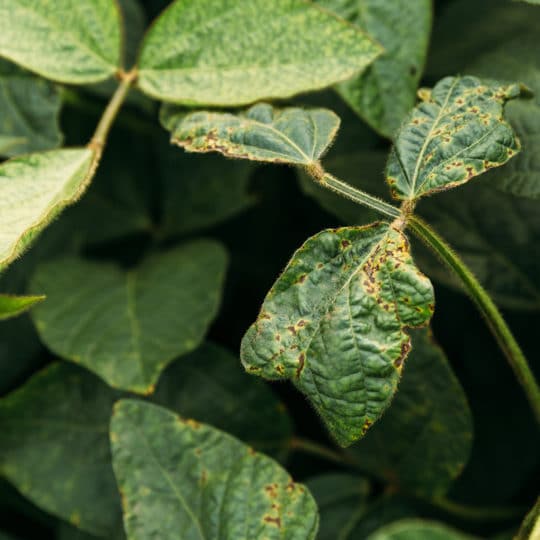Common Tree Diseases
Signs & Treatment Options
Posted
October 13, 2022

Is your tree trying to tell you something? There are certain signs of stress and other ailments that may not require tree removal but certainly require your attention. Learn about the symptoms, causes, and treatment options of some of the most common tree diseases.
Common Tree Diseases
Like any living thing, trees are susceptible to certain ailments. Some types of trees are more prone to certain conditions than others. Causes range from harsh weather to insect infestation. Prevention and treatment options also vary. No matter the condition or cause, it’s best to learn the signs of common tree diseases and have an idea of what to do once your tree is affected.
- Anthracnose. A fungal disease that grows in cold, wet weather. Most common in maple, oak, and sycamore trees. Signs include leaf spots, early leaf drop, and dead twigs.
- Bacterial Blight. Fruit trees, including cherry, plum, and pear trees, are prone to bacteria that show up as small dark spots on leaves, twigs, and fruit.
- Canker. Maple, oak, and willow trees are susceptible to fungi and bacteria that cause large areas of the bark to die.
- Damping-off and Root Rot. This fungal disease starts in the soil and affects young pine and fir tree roots. Leaves are likely to yellow and wilt and tree growth is usually stunted.
- Fusiform Rust: Pines are also affected by this fungal disease spread by wind-blown spores. In addition to yellowing and falling needles, a canker can also form on the tree trunk.
- Dutch Elm Disease. A beetle that bores into the bark of an elm tree causes this fatal fungal disease. Leaves yellow and wilt and the tree is likely to die within a year since there is currently no treatment option.
- Powdery Mildew. Warm, humid weather feeds this fungal disease that affects maple, oak, and sycamore trees. A white or gray powdery growth can be found on the stunted leaves.
- Scale. A sticky or shiny substance on tree or shrub branches could be a sign of insects that excrete honeydew after feeding on the plant. Not only is this a sign of a pest problem, but it could cause a larger problem since the honeydew also attracts other sweet-seeking pests.
In addition to fungi and bacteria, a tree can show signs of stress—like discolored leaves—if there’s too much or not enough water. Pests can also leave holes, bite marks, and skeletonized leaves behind after a meal.
Preventing & Treating Tree Disease
One of the best ways to prevent any disease from taking hold is to regularly maintain healthy habits. For trees, this means proper pruning, watering, mulching, and fertilizing. A healthy tree not only fends off disease, but it’s more likely to survive environmental stressors.
Treatment depends on the type of disease and overall health of the tree. Once you’ve noticed any signs in the leaves, branches, or trunk, your next step should be contacting a certified arborist to confirm the disease and recommend a treatment plan. Most of these plans include:
- Fungicides
- Bactericides
- Pruning
- Regular maintenance
Obviously, you’ll want to confirm the type of disease before applying any chemical fungicide or pesticide. Different diseases have the same symptoms (yellowing and dropping leaves) but they may not have the same treatment options. So, it’s best to have a pro take a look to make sure you know what you’re dealing with.
One of the first things you can do is to prune any dead or diseased branches to help stop the spread and eliminate hazards. Once the problem is properly diagnosed and initially treated, you’ll then want to follow a maintenance plan that includes pruning, watering, feeding, and mulching when necessary. Contact Elite Tree Care to help diagnose any plant issues and help develop a plan to treat and prevent future problems.

Download Your FREE Tree Planting Guide
Planting a tree is a cinch, as long as you are properly prepared. Get prepped to plant one tree or 100 with our straightforward guide.